Cadex Amp 3D Saddle With New Print Pattern

“], “filter”: { “nextExceptions”: “img, blockquote, div”, “nextContainsExceptions”: “img, blockquote, a.btn, a.o-button”} }”>
Welcome to Velo’s Sea Otter Classic coverage, where we share our favorite things we’ve seen at the 2025 show. Bikes, components, everything racing, and more: if we think it’s cool, you’ll see it. See the rest of our coverage here.
Today Cadex became the latest brand to launch a 3D printed saddle with the arrival of the Cadex Amp 3D.
Cadex is far from the first brand to introduce a 3D printed saddle and like almost every other option on the market Cadex is also partnering with Carbon to handle the 3D printing. Despite that, this one is still unique.
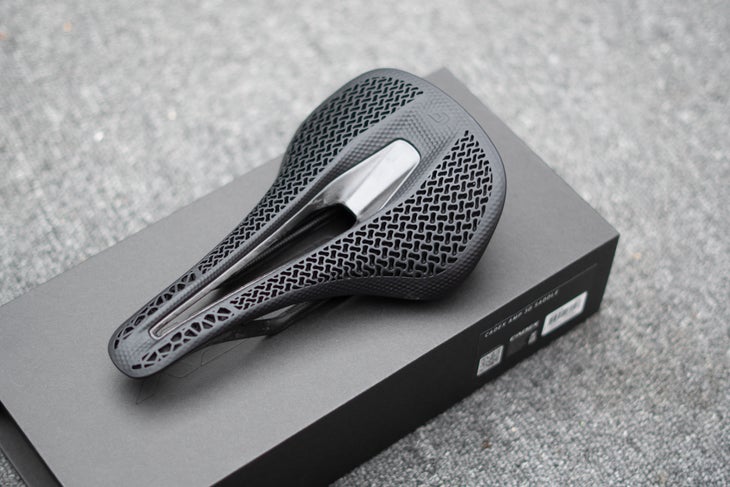
The benefit of a 3D printed saddle
Understanding why the Cadex Amp 3D saddle is different has to start with a basic understanding of why it makes sense to consider a 3D printed saddle.
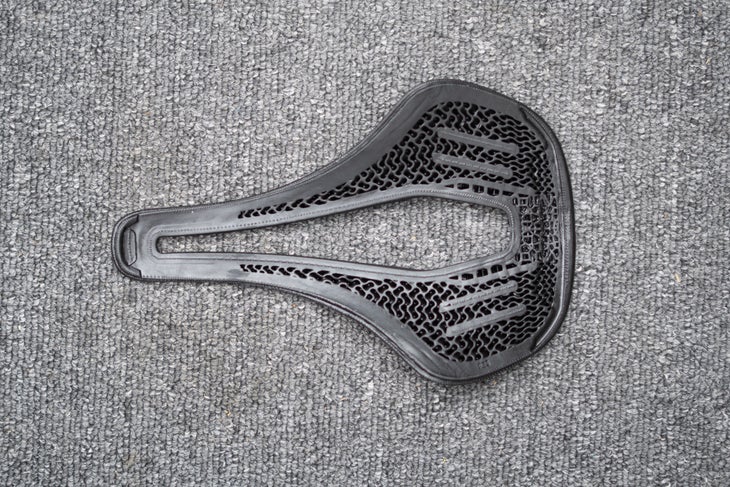
Performance saddles require a dense support structure. In other words they need to be relatively hard. Except that not every part of a saddle needs to have that same density.
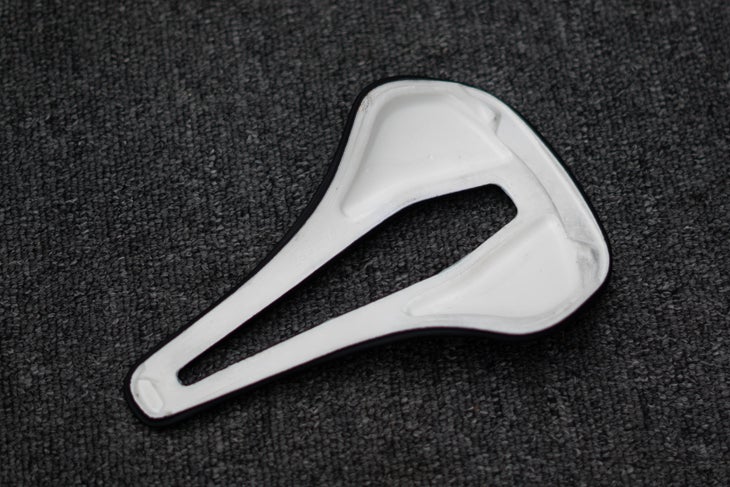
That part matters because the difference between a traditional saddle and a 3D printed saddle is precision. Using foam and fabrics only allows a certain latitude of density changes as you move around a saddle. It can get a bit stiffer here and a bit softer there but there’s a limit to it. By using 3D printing a saddle company can get even more precise so that the saddle is only as dense as it needs to be in every specific part.
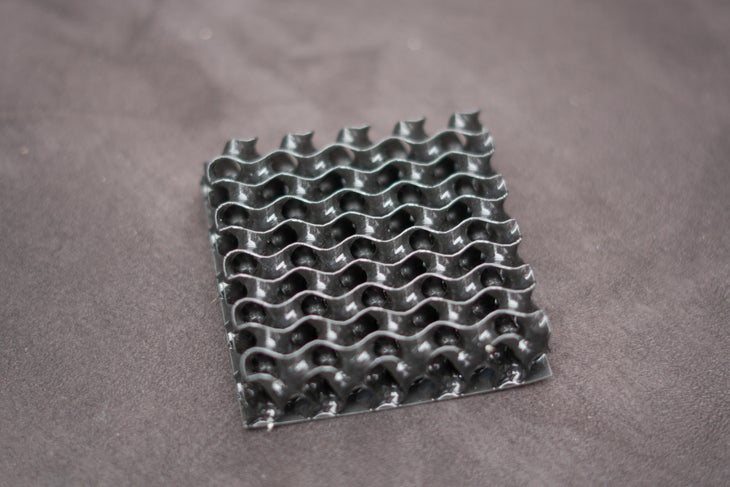
A different infill
Creating this precision is the job of the infill design. The characteristic hexagonal look of a 3D printed saddle is the infill and so far they’ve almost all been the same. Each brand uses a bit of a special sauce to decide where it’s soft, and how soft, and where it’s hard but the actual structure is the same.
The Cadex Amp 3D only uses the hexagon structure for the edges and instead switches to a gyroid infill for the central section of the saddle. Instead of hexagonal shapes it’s a twisting, turning, and continuous undulating series of curves.

The point of the change is to change the support characteristic of the upper saddle structure. Cadex explains that the typical design responds to pressure by compressing towards the base plate of a saddle. The gyroid infill is instead meant to spread out in all directions when compressed.
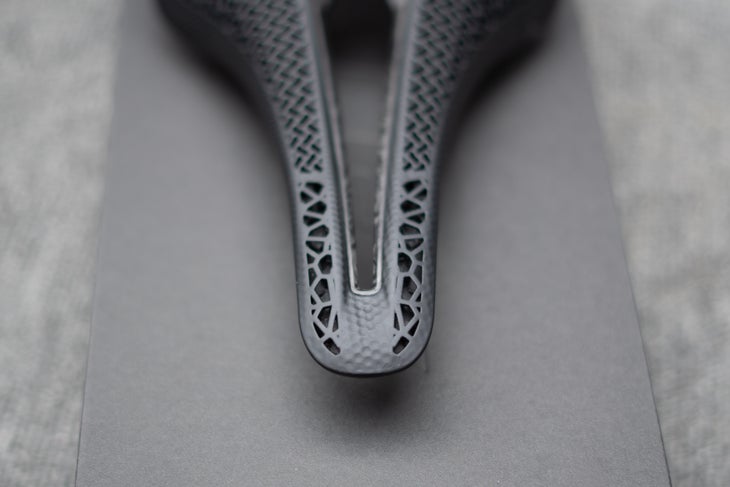
Said simply, the Cadex Amp 3D is softer than other 3D printed saddles. Or, more precisely, it’s softer in specific places. Lean forward into an aggressive position and you will find a denser, firmer, upper to the saddle. Sit up a bit and move into a more comfortable position and you’ll find yourself in the softest part of the saddle. Only The Specialized Power saddle comes close in its softness to the Cadex Amp 3D but Cadex goes even a bit softer.

The Cadex Amp 3D is a Cadex Amp with a new upper
Aside from this trick of design that creates a softer upper, the Cadex Amp and the Cadex Amp 3D are the same. The trick of the Cadex Amp is that the saddle rails are integrated into the base rather than attached as other saddles are. The effect is “to eliminate traditional contact points, which helps relieve pressure and improves compliance.”
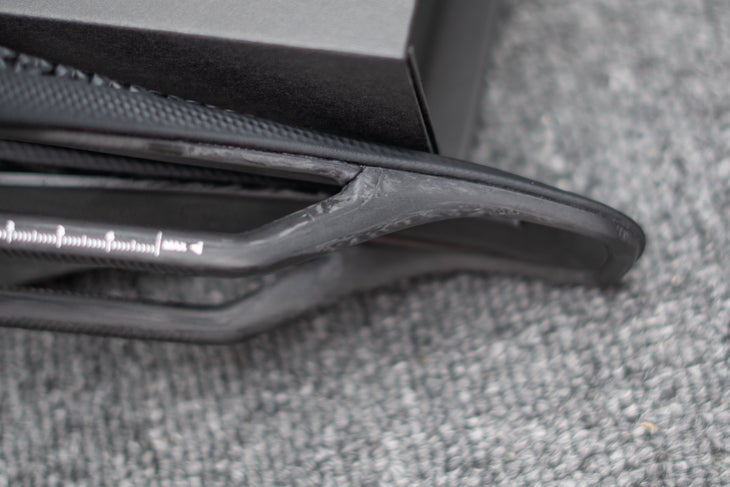
This design remains the same as does the shape of the Amp. That means, like the Specialized Power saddle, the Amp is rather wide at 145mm with a short 245mm length and quick fall off as you move towards the front of the saddle. When combined with the new upper, the new saddle hits 145 grams on the scale.
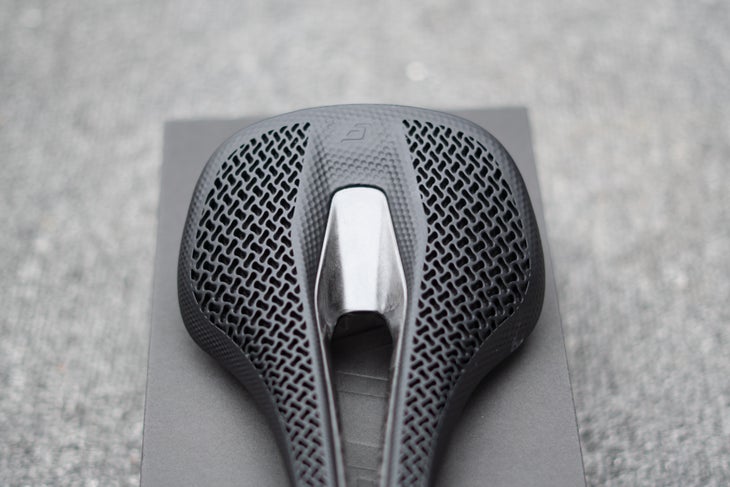
Pricing and availability
The Cadex Amp 3D saddle is available worldwide as of today. Pricing is set at $450 / €400.
For more information visit the Cadex website.




